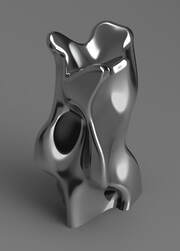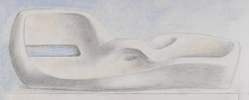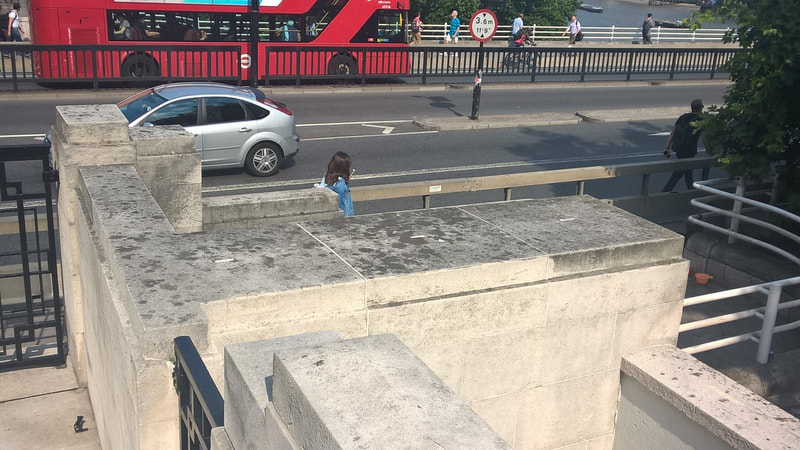Waterloo Bridge, London

Engineering Meets Art
This project aims to bring engineering together with sculpture to commemorate the engineering and technical work of women who built Waterloo Bridge during the Second World War. It uses the four designs produced by Barbara Hepworth (shown above) in 1947 for the four plinths on the corners of Waterloo Bridge as inspiration for a school competition.
Millions of women were brought into engineering, manufacturing and construction roles during the two World Wars in the UK, and there is no better icon to represent this work than the Waterloo Bridge itself, which was built by a significant proportion of female construction workers who replaced their male counterparts who were away at war. Known as the Ladies Bridge, the Waterloo Bridge has become a modern day focus for much recent activity to bring the stories of these women welders and construction workers to light, thanks to photographic evidence being uncovered to verify the stories that have, until now, been passed on by word of mouth for over 75 years.
In parallel to the engineering stories relating to Waterloo Bridge, another story emerges of the competition that took place in the late 1940s to commission sculptures to sit on the four plinths of the bridge, which resulted in 16 unbuilt designs by World renowned artists including Barbara Hepworth. Further details here.
School Outreach Project Proposal
The Waterloo Bridge Schools Sculpture project is based on the merging of these two historical stories - the achievements of the women engineers who built the bridge, and the woman sculptor who designed the iconic pieces of artwork to adorn the four plinths. Barbara Hepworth was just one of a group of leading artists who submitted designs for four stone sculptures to be erected on the plinths on each corner of the bridge – none of which were ever commissioned. The plinths remain empty to this day.
Permission has been granted by the Barbara Hepworth Trust to use the drawings and models of the sculptures - some of which are housed in the Tate Gallery - for educational purposes.
The outreach activity proposed will tell the story of the Bridge build and the sculpture competition, and challenge the students to use these influences as inspiration to come up with their own designs to celebrate these women construction workers. One of the designs produced by the students will be chosen for production and erection on or near the plinths of the Waterloo Bridge.
The project proposes to make use of 3D printing equipment commonly found in schools today in order to produce scale models of the designs, and the plan is to host an exhibition of the shortlisted entries.
Beyond the culmination of the competition, the outreach activity can continue to be delivered by schools looking to combine art and engineering in order to appeal to the next generation of inspired engineers.
If you would like to know more about this project, or to get involved, please get in touch.
This project aims to bring engineering together with sculpture to commemorate the engineering and technical work of women who built Waterloo Bridge during the Second World War. It uses the four designs produced by Barbara Hepworth (shown above) in 1947 for the four plinths on the corners of Waterloo Bridge as inspiration for a school competition.
Millions of women were brought into engineering, manufacturing and construction roles during the two World Wars in the UK, and there is no better icon to represent this work than the Waterloo Bridge itself, which was built by a significant proportion of female construction workers who replaced their male counterparts who were away at war. Known as the Ladies Bridge, the Waterloo Bridge has become a modern day focus for much recent activity to bring the stories of these women welders and construction workers to light, thanks to photographic evidence being uncovered to verify the stories that have, until now, been passed on by word of mouth for over 75 years.
In parallel to the engineering stories relating to Waterloo Bridge, another story emerges of the competition that took place in the late 1940s to commission sculptures to sit on the four plinths of the bridge, which resulted in 16 unbuilt designs by World renowned artists including Barbara Hepworth. Further details here.
School Outreach Project Proposal
The Waterloo Bridge Schools Sculpture project is based on the merging of these two historical stories - the achievements of the women engineers who built the bridge, and the woman sculptor who designed the iconic pieces of artwork to adorn the four plinths. Barbara Hepworth was just one of a group of leading artists who submitted designs for four stone sculptures to be erected on the plinths on each corner of the bridge – none of which were ever commissioned. The plinths remain empty to this day.
Permission has been granted by the Barbara Hepworth Trust to use the drawings and models of the sculptures - some of which are housed in the Tate Gallery - for educational purposes.
The outreach activity proposed will tell the story of the Bridge build and the sculpture competition, and challenge the students to use these influences as inspiration to come up with their own designs to celebrate these women construction workers. One of the designs produced by the students will be chosen for production and erection on or near the plinths of the Waterloo Bridge.
The project proposes to make use of 3D printing equipment commonly found in schools today in order to produce scale models of the designs, and the plan is to host an exhibition of the shortlisted entries.
Beyond the culmination of the competition, the outreach activity can continue to be delivered by schools looking to combine art and engineering in order to appeal to the next generation of inspired engineers.
If you would like to know more about this project, or to get involved, please get in touch.
Images of the Plinths of Waterloo Bridge










